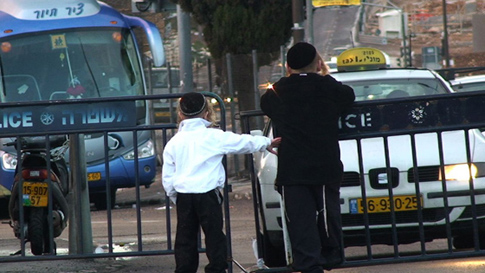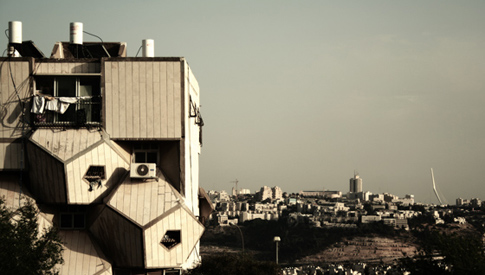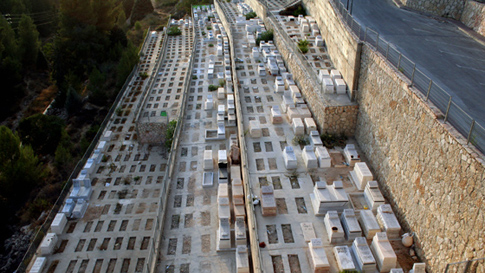

| Nira Pereg |
 Sabbath 2008, 2008 The work Sabbath 2008 documents the closing of the ultra-orthodox districts in Jerusalem on the eve of the Sabbath. With the consent of police and city administration, residents erect temporary barriers in order to block vehicle access to these areas for 24 hours. During these hours, the strict rules of the religious day of rest apply – topologically, the city is transformed into two cities. Nira Pereg observes this regularly repeated ritual of putting up borders and points to its potential for conflict. Searching for the personal within a systematic ritual, she, in so doing, develops her own photographic and filmic ritual. Out of the presence of the barriers, the portrait of a city emerges, in which sacred space is firmly separated from secular space.  Location 8 – Ramot Polin/Polish Hills, 2008 In Location 8 Nira Pereg resorts to the orthodox neighborhood Ramot Polin, located at the north outskirts of Jerusalem, which has also been a filming location for Sabbath 2008. Built in the 1970s to the designs of Zvi Hecker, one of Israel's most determinedly avant-garde architects, Ramot Polin was one of the few attempts by the national Ministry of Housing, to break out of the standard architectural mold, and create a neighborhood for a religious community. Hecker created a "beehive"-like structure, clattered with almost no straight walls and windows. In her photographs, Pereg focuses the relation between indoor and out door, windows and wall, humans and geometry, and comes up with a story of a place and its inhabitants.  Kept Alive, 2008 The photographs under the title Kept Alive focus on one of the largest cemeteries in Israel, Har Meuchot (Mountain of Rest). This cemetery, founded in 1953, lies on a slope of the mountain along Side Road no. 1, and functions as an impressive backdrop for the main approach road to Jerusalem. The cemetery spreads across 580,000 square meters, and is constantly being expanded. Therefore, it is still possible to reserve burial grounds or to buy them. Reserved graves may be marked at the buyer's request, and a few choose to mark their burial plot with the sign "Alive" or "Kept Alive." In this project, Nira Pereg continues with her search for signs of individuality within a social system, and documents the burial grounds of those who are still living, yet already possess a concrete territory among the dead. By documenting the graves of those who are still alive, but already own a defined bit of territory among the dead, Nira Pereg's work continues her search for signs of individuality within a social system. Nira Pereg, * 1969 in Tel Aviv (IL), lives and works in Tel Aviv (IL)  Nira Pereg, Sabbath 2008, 2008 Nira Pereg, Sabbath 2008, 20081-channel video projection (colour, sound) 7 min., loop courtesy Nira Pereg produced in cooperation with ZKM | Center for Art and Media Karlsruhe Nira Pereg, Location 8 – Ramot Polin/Polish Hills, 2008 14 photographs (c-print), each 60 x 80 cm courtesy Nira Pereg Nira Pereg, Kept Alive, 2008 12 photographs (c-print), each 70 x 100 cm courtesy Nira Pereg
|